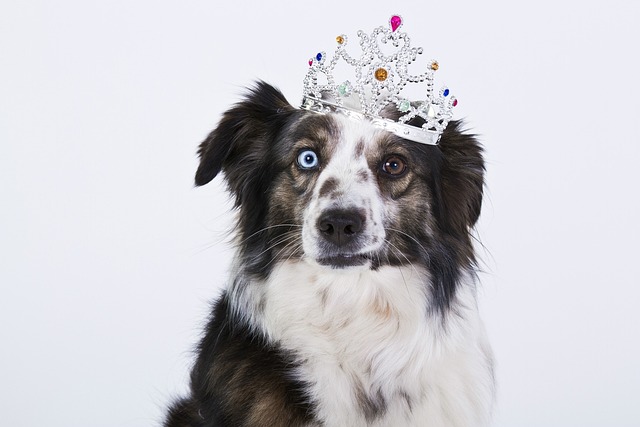
Can I give my dog CBD chews every day
Picture this: You’re curled up on your San Francisco apartment couch, watching your rescue mutt, Charlie, tremble during a thunderstorm.
Seizures in dogs are sudden and uncontrolled bursts of electrical activity in the brain that can result in convulsions, twitching, or loss of consciousness. They can be frightening to witness and potentially dangerous if left unmanaged. While seizures may stem from various causes like genetic predispositions or underlying neurological conditions, dietary triggers are often overlooked but can play a critical role. For dog owners in the United States, understanding how certain foods impact canine health is essential to prevent these episodes and ensure a safe and healthy diet for their pets.
Some foods are widely recognized as toxic to dogs and have long been associated with serious health risks, including seizures. Chocolate, for instance, contains theobromine, a compound that dogs cannot metabolize efficiently. Ingesting even small amounts can lead to seizures, along with symptoms like vomiting or rapid heart rate. Grapes and raisins are another common danger, as they can cause acute kidney failure and neurological distress, including seizures. Similarly, onions and garlic contain thiosulfate, which can damage a dog’s red blood cells and lead to complications such as seizures in severe cases. These foods are well-documented hazards, but they are just the tip of the iceberg.
Surprisingly, several everyday foods found in American households can also trigger seizures in dogs, often catching pet owners off guard. Artificial sweeteners like xylitol, commonly found in sugar-free gum, candies, and baked goods, are highly dangerous for dogs. Even trace amounts can cause a sudden drop in blood sugar levels, leading to seizures or worse. Certain nuts, such as macadamia nuts, are another unexpected culprit. Although widely enjoyed by humans, these nuts can cause neurological issues, including seizures, when consumed by dogs. Processed snacks, especially those rich in preservatives or sodium, can lead to toxic levels of certain compounds in a dog’s system, resulting in neurological disturbances. These examples highlight the importance of scrutinizing what your dog might accidentally ingest, especially in a culture where sharing food with pets is common.
The reason these foods can cause seizures lies in the biological differences between dogs and humans. Dogs lack the enzymes needed to break down certain compounds found in human foods. For example, xylitol is harmless to humans but triggers an insulin surge in dogs, leading to hypoglycemia and neurological symptoms. Similarly, theobromine in chocolate accumulates in a dog’s system, as they metabolize it much more slowly than humans. Understanding these metabolic disparities can help pet owners make informed decisions about what foods are safe to include—or exclude—from their pet’s diet.
Preventing seizures through diet starts with vigilance and proactive care. Always read ingredient labels carefully, especially for items like baked goods or snacks that may contain hidden dangers such as xylitol. Keep potentially harmful foods out of reach, whether stored in cabinets or on countertops. For dogs prone to seizures, consider consulting a veterinarian or canine nutritionist to develop a seizure-friendly diet tailored to your pet’s needs. Safe alternatives, such as dog-specific treats or fresh fruits like apples and blueberries, can satisfy your dog’s cravings without compromising their health.
If your dog does experience a seizure, knowing when to seek veterinary help is crucial. Signs of seizures include muscle spasms, drooling, disorientation, and loss of bladder control. If the episode lasts more than a few minutes or occurs repeatedly, immediate veterinary intervention is necessary. A veterinarian can help identify the root cause and recommend appropriate treatments, including adjustments to your dog’s diet or medication to manage seizures effectively.
In conclusion, being aware of foods that cause seizures in dogs is a vital part of responsible pet ownership. From commonly known toxic foods like chocolate and onions to unexpected risks such as xylitol and macadamia nuts, the list of dietary hazards might be longer than many pet owners realize. By understanding why these foods affect dogs differently and implementing preventive measures, you can protect your furry friend from unnecessary harm. For more information, consult your veterinarian and explore reputable resources that offer guidance on canine health and nutrition. Your dog’s well-being begins with the choices you make each day.

Picture this: You’re curled up on your San Francisco apartment couch, watching your rescue mutt, Charlie, tremble during a thunderstorm.

Watching your dog's behavior change without understanding the cause feels like walking in the dark. When a dog's kidneys start shutting down, their body sends out distress signals through shifts in daily habits, energy levels, and physical cues.

Watching your dog slow down on walks or struggle to jump onto the couch tugs at the heartstrings. Degenerative joint disease, often called arthritis, is a common condition that can rob our furry friends of their mobility.

When your dog’s energy suddenly drops or they start drinking more water than usual, it’s easy to feel a knot of worry. Kidney disease, a silent but serious condition, often creeps up without warning.

If you’re a first-time puppy parent in Texas, you’ve probably watched your tiny ball of energy lap up water like it’s their job—then panicked: Is this too much?

Discovering your dog has elevated urea levels can feel like a gut - punch. High urea, often a sign of kidney or liver stress, can’t be ignored.